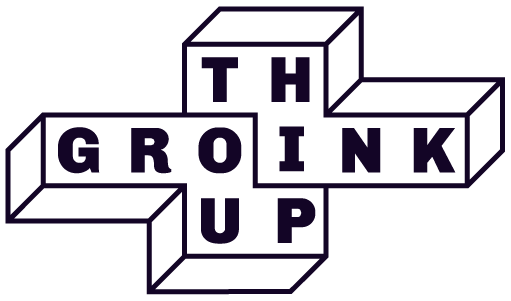9 highlights from our Lazy Book Club on ‘Creativity Inc.’
For this Lazy Book Club, we covered Ed Catmull’s excellent book Creativity, Inc..
Yes, it’s about the history of Pixar, but it’s really a book about understanding creativity. So whether you work in marketing strategy, digital, content or social media, this book probably has something for you.
Here are seven takeaways from our conversation.
1. The process either makes you or unmakes you
At Pixar, they focus on having clear processes that allow the company to maintain a high standard for everything they do. That said, there is a risk that over-investing in process reduces the unpredictability of the work. So the key tension is that there are some hygiene things to keep in check from a process point of view, but process should never get in the way of getting to interesting answers for our clients.
2. Sometimes culture beats process
Sometimes companies place less importance on processes or templates, and more on culture. This is ok too. A culture of asking why, constantly going after what is the commercial challenge and outcome we need to solve for. A lack of templates or process could create unnecessary tensions, but the point is that you can have an expectation to create interesting output, regardless of how you do it. As long as you’re trying to understand the question and giving ideas, it doesn’t matter how you do it. And this is something managers need to foster more of.
3. An idea is a combination of many ideas
When we see a film, we might think that film is a lovely idea. But in fact, what we don’t realise is a film is a collection of loads and loads of good ideas (and good decisions). And those different ideas change over time, because that’s how you get to better thinking. This is similar to when we approach a strategic or creative piece of work, because they are not single objects, but a combination of multiple ideas. The best strategy and creative work are the result of various conversations and iterations over time.
4. Over-planners just take longer to be wrong
Related to the previous point, the need to get it right often creates a pressure to do a bunch of work until you show it to someone, hoping it’s perfect. When in reality, it’s helpful for strategists to be able to “kill their babies”. In that sense, bringing in creatives or the account team earlier helps, sharing strategy early helps, and having briefing buddies (people who give you perspective on your briefs, even if they don’t work on the account) helps. Sharing early and often and operating on hypotheses is the most effective way of eliminating the bad options.
5. Leave room for exploration
Creative teams tend to prefer exploration, whereas strategists tend to cut exploration short too quickly. In fact, and especially early in a project, it’s more important to get your story right, even if that means your deck isn’t as pretty or detailed as you hoped it would be. That requires exploration, seeing what resonates. Also, a brilliant piece of advice from one of the attendees: when presenting first thoughts, never use the agency templates. Templates get people into editing mode. Not using them keeps options open and focused on the content (as opposed to the format).
6. Don’t expect things to run smoothly
As strategists, sometimes there’s an expectation that there is a way this is meant to work, a linear way, and if things don’t go that way then something must have gone wrong. In reality, due to the nature of creative work, things get a bit chaotic and that’s ok. This is also important when discussing with clients, so you can take them on the journey that even if things might not be 100% right just yet, what’s important is that people and the work are heading in the right direction.
7. Focus on the problem, not the person
This one is for those of us who tend to struggle with feedback, or think someone is being unfair when critiquing work. At its best, a critique is about the work, not about the person doing it. This is important to remember, because it means there is enough depth of relationships between people to know that, even if the work is not quite right yet, there is trust that the people doing it will eventually get there. It’s also a way to ensure that, even if projects have their road bumps (they always do), motivation stays high because people know others trust them to do the right thing.
8. If anything specific group wins, we all lose
Success can only be total. Or it’s not success. In an agency, like at Pixar, different teams (strategy, account, media, creative) have competing needs and objectives. But when one of these single team wins over the other, it probably means the project overall didn’t meet many targets. It’s not about dilution, it’s about recognising everyone’s needs and challenges and prioritising the right one throughout the process.
9. Plans are useless, planning is everything
Yeah, just that.
Want to come to our strategy events and discuss more stuff like this? Become a Group Think member below. It’s all free.

